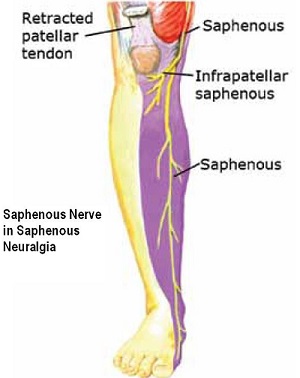Emergency department clinicians and those who are working in other acute care departments have frequent encounter with patients suffering from trauma to the foot or lower leg that require local anesthesia to repair the injured area. Saphenous nerve block has a great role to play in such cases. What exactly is a saphenous nerve? What are the uses of saphenous nerve block? Let us read on for more information.
What Is Saphenous Nerve?
Before moving to saphenous nerve block, let's first look at saphenous nerve. This nerve is a pure sensory nerve and originates from the nerve root L2-L4 gives rise to a cutaneous (traversing the skin) branch known as the saphenous nerve. The saphenous nerve lies anteriorly in the femoral triangle, just lateral to the femoral sheath and accompanying the femoral artery, and then passes between the gracilis and sartorius muscles in the anterior part of the thigh. Then the nerve travels superficially down the medial part of the knee to the anteromedial lower leg. At last, the saphenous nerve innervates the dorsum of the foot, the medial part of the foot and the great toe region.
How Does Saphenous Nerve Block Help?
 A regional saphenous nerve block can cause rapid anesthesia to the anteromedial portion of the leg. Compared to local infiltration, this procedure has unique advantages. For example, enough anesthesia can be attained with fewer injections, smaller volume of anesthetic and less injury. So patients can tolerate this procedure better and are at low risk of getting a needlestick injury.
A regional saphenous nerve block can cause rapid anesthesia to the anteromedial portion of the leg. Compared to local infiltration, this procedure has unique advantages. For example, enough anesthesia can be attained with fewer injections, smaller volume of anesthetic and less injury. So patients can tolerate this procedure better and are at low risk of getting a needlestick injury.
Saphenous nerve block is not only popular for anesthesia during procedures, but also for treating pain after certain procedures. Recently it has been demonstrated that it can be an effective technique to control pain after knee surgery.
Though the saphenous nerve can be blocked at various locations such as above the knee, below the knee, at the knee or just above the ankle, it is common practice to block it at the ankle because it is superficially located there.
What Procedures Are Available?
Here are four ways to perform saphenous nerve block:
1. Transsartorial Approach
While the patient lies in the supine position and the leg extended and elevated about 2 inches above the bed, the doctor identifies the sartorius muscle above the knee on the medial side of the leg and insert needle at 1-2 cm above the patella (knee cap) passing through the sartorius muscle body. A gentle aspiration is performed once a resistance loss is appreciated and 10 ml of local anesthetic is deposited. There is typically a distance of 1.5 to 3.0 cm from the skin to the area where resistance is lost.
2. Paravenous Approach
A tourniquet is placed around the leg at the level of the tibial tuberosity. The leg is then placed over the side of the bed for 1 minute so the saphenous vein can be identified. The saphenous nerve is located on the medial and posterior side of the vein. Once the saphenous vein becomes palpable, 5 ml of local anesthetic is deposited subcutaneously below the patella on the medial side of the leg.
3. Below-Knee Field Block Approach
Similar to the paravenous approach, this approach involves injecting anesthetic over a wider area. The patient lies in the supine position and tibial tuberosity is identified (it is a prominence on the tibial bone several centimeters distal to the knee cap). 5-10 ml of local anesthetic is deposited subcutaneously starting medial to the distal tuberosity and ending at the medial side of the calf.
4. Saphenous nerve blocks with Ultrasound Guidance
This procedure has been described recently where the saphenous vein is used as an ultrasound landmark. The success rates of the saphenous nerve block have improved with the use of ultrasound guidance in comparison with below knee field blocks and blind trans-sartorial approaches. The techniques using ultrasound guidance are simple, quickly performed and fairly reproducible.
